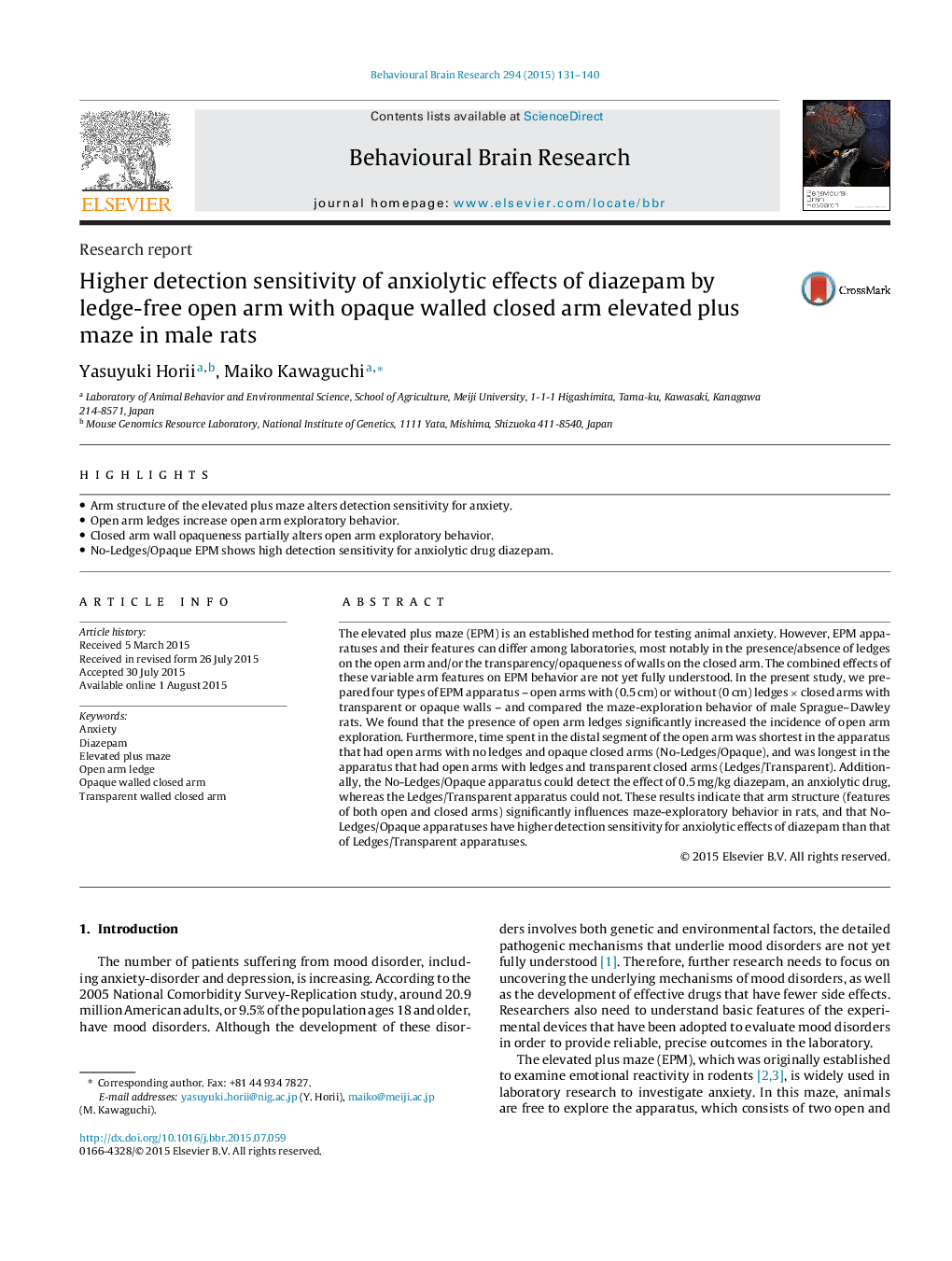| Article ID | Journal | Published Year | Pages | File Type |
|---|---|---|---|---|
| 4312446 | Behavioural Brain Research | 2015 | 10 Pages |
•Arm structure of the elevated plus maze alters detection sensitivity for anxiety.•Open arm ledges increase open arm exploratory behavior.•Closed arm wall opaqueness partially alters open arm exploratory behavior.•No-Ledges/Opaque EPM shows high detection sensitivity for anxiolytic drug diazepam.
The elevated plus maze (EPM) is an established method for testing animal anxiety. However, EPM apparatuses and their features can differ among laboratories, most notably in the presence/absence of ledges on the open arm and/or the transparency/opaqueness of walls on the closed arm. The combined effects of these variable arm features on EPM behavior are not yet fully understood. In the present study, we prepared four types of EPM apparatus – open arms with (0.5 cm) or without (0 cm) ledges × closed arms with transparent or opaque walls – and compared the maze-exploration behavior of male Sprague–Dawley rats. We found that the presence of open arm ledges significantly increased the incidence of open arm exploration. Furthermore, time spent in the distal segment of the open arm was shortest in the apparatus that had open arms with no ledges and opaque closed arms (No-Ledges/Opaque), and was longest in the apparatus that had open arms with ledges and transparent closed arms (Ledges/Transparent). Additionally, the No-Ledges/Opaque apparatus could detect the effect of 0.5 mg/kg diazepam, an anxiolytic drug, whereas the Ledges/Transparent apparatus could not. These results indicate that arm structure (features of both open and closed arms) significantly influences maze-exploratory behavior in rats, and that No-Ledges/Opaque apparatuses have higher detection sensitivity for anxiolytic effects of diazepam than that of Ledges/Transparent apparatuses.
